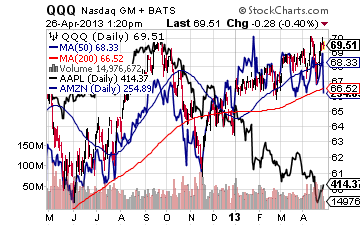By Randall Palmer and Alastair Sharp
MONTREAL/TORONTO (Reuters) - Chiheb Esseghaier, a Tunisian doctoral student in Quebec, ran afoul of his research institute's administration two years ago when he tore down posters for the charity United Way showing naked men and women with the slogan "Underneath, we are all equal."
"We met with him to discuss with him and to try to understand why he did that. We explained that we don't do that here," said Julie Martineau, a spokeswoman at the INRS research center at Varennes, south of Montreal.
The incident may have been a simple misunderstanding over cultural norms. But now Esseghaier is one of two men facing charges including conspiracy to commit murder in what prosecutors say was an al Qaeda-backed plot.
They allegedly hoped to derail a passenger train.
An observant Muslim and a Canadian resident, Esseghaier was described by the Tunisian embassy in Ottawa as "a Tunisian citizen and a brilliant PhD student" in a statement issued this week.
He started his four-year research program at the Institut national de la recherche scientifique in 2010, investigating the use of nanotechnology to detect cancer and other diseases.
Esseghaier, aged 30, is the younger of the two men accused of the conspiracy. He faces an additional charge that he instructed one or more people to carry out terrorist activity. He has said the allegations against him are based on laws that are unreliable because they are not the work of God.
In Tunisia, Esseghaier's parents told Reuters that their son was innocent.
"My son is a human being and could not kill an ant. He is the victim of a security crackdown carried out by Canada against religious people to convince people that the Boston incident will not be repeated in Canada," his father Mohamed Rashad Esseghaier said.
"My son is a genius. He has accomplished excellent medical research. He attended seminars in New York. I am proud of him."
His friends in Tunisia said he was easily swayed. "It was easy to influence him; he has a weak personality," one friend, Meriam Sassi, told Reuters. "He could not differentiate between the truth and a joke.
NANOTECHNOLOGY
Esseghaier has been in Canada since 2008, most recently at the prestigious INRS, where he was writing his PhD thesis.
Esseghaier's profile on the networking site LinkedIn is in keeping with the professional focus of the site.
It lists him as the co-author of six academic papers and an attendee at conferences across North America, noting that he obtained a Tunisian master's degree in industrial biotechnology and studied at Quebec's Universite de Sherbrooke before INRS.
Until earlier this week, the profile had one unusual feature. It displayed the black and white flag of al Qaeda's wing in Iraq instead of a profile picture.
By Tuesday, LinkedIn had removed the flag, the emblem of the Islamic State of Iraq, an umbrella group of al Qaeda-linked insurgents. A LinkedIn spokesman said the rules of the site say profile pictures must be of the person.
Attempts by Reuters in the Middle East to reach the Islamic State of Iraq were not successful.
A co-author of one of Esseghaier's academic papers had little insight into the Tunisian.
"It appears that we shared co-authorship in a journal article dealing with biosensors for diagnostics," Carlos Suarez, from Washington State University, told Reuters by email.
"I was quite shocked to find out that I was somehow associated with this person. However, despite sharing co-authorship I've never met this guy before and I don't know who he is."
MONTREAL MOSQUES
Esseghaier, listed as homeless in court papers after his arrest, was known both at a neighborhood mosque in Montreal, and at a larger place of worship that the Pentagon once identified as a place where Islamic extremists were recruited.
"I knew him as a normal Muslim, but I don't know what happened after," one man said as he exited midday prayers at the unassuming Cote-des-Neiges mosque, behind a simple storefront in a multicultural Montreal neighborhood.
A second worshipper said he had seen Esseghaier on Saturday as he looked at accommodation ads at the Assuna Annabawiyah Mosque. The mosque is the only one in North America on a classified Pentagon list of nine mosques where al Qaeda members had recruited, helped or trained.
The New York Times published the Pentagon document, called "Matrix of Threat Indicators for Enemy Combatants," in April 2011, and said the document helped U.S. military analysts assess what risk detainees at its Guantanamo Bay prison might pose.
The Pentagon declined to discuss classified assessments.
Abdel Salam Elmenyawi, president of the Assuna Annabawiyah Mosque, said he had never heard of Esseghaier before he was arrested.
Asked to comment on the Pentagon threat matrix report, he said: "This is such total nonsense."
U.S. law enforcement and national security officials said on Thursday they believed Esseghaier traveled to Iran within the past two years on a trip directly relevant to the investigation of the alleged plot. Canadian police have said the two men received "direction and guidance" from "al Qaeda elements in Iran," though they say there is no sign of Iranian government involvement with the suspects.
CO-ACCUSED
Esseghaier's co-accused is Raed Jaser, 35, a Palestinian whose family came to Canada as refugees in 1993 from the United Arab Emirates. Most of the family are now Canadian citizens.
Like Esseghaier, Jaser held increasingly strong Islamist views, to the extent that his father Mohammed reached out for help to Muhammad Robert Heft, a Canadian convert to Islam and an outreach worker with disaffected Muslim youth.
Heft said the father had expressed concern to him about Jaser's extremist positions starting in 2010.
"He knows something is wrong with that, but not obviously to the degree that his son is going to go off or essentially get arrested for terrorism," Heft said. "When a guy prays to God the manifestations should be that he becomes more merciful and more compassionate, not more angry and aggressive."
An immigration document posted online by the National Post newspaper shows the government tried to deport Raed Jaser in 2004 because of several convictions he racked up after he came to Canada.
The transcript showed Jaser had five convictions for fraud and two for "failure to comply with a recognizance."
But Jaser, who was born in the UAE, was stateless and the Canadians were not sure where to deport him to.
Jaser eventually obtained the status of a permanent resident, Canada's equivalent to a U.S. Green Card.
The family attended his preliminary court hearing on Tuesday in a show of support. They declined to speak to the media after the hearing, and Reuters has been unable to contact them.
Jaser's lawyer John Norris, won an immediate publication ban on court proceedings - barring media from publishing details.
Company records kept by Industry Canada list Jaser as a director of a now defunct limousine service, a firm incorporated in 2008 and dissolved three years later for failing to file annual documents.
Canadian media say he worked more recently at his brother-in-law's moving and storage company, and also as a dispatcher and bus driver.
Members of the Masjid al-Faisal mosque, a short walk from Jaser's semi-detached rented home in Toronto, described Jaser as a quiet, religious man who attended prayers as often as five times a day, at the scheduled prayer times for devout Muslims, and often brought his wife.
"As a person he was very quiet, peaceful. He used to interact in terms of socializing ... but he didn't socialize too much because he came here most of the time with his wife, so he didn't stick around too long," said a senior member of the congregation who asked not to be named.
"But other than that, a very nice fellow."
(Additional reporting by Leila Lemghalef in Montreal and Susan Taylor and Allison Martell in Toronto, Mark Hosenball in Washington, Tarek Amara in Tunis; Editing by Frances Kerry and Claudia Parsons)
Source: http://news.yahoo.com/canadian-train-plot-suspects-caused-unease-extreme-views-221636253.html
rubio Affenpinscher Dorner Banana Joe state of the union fat tuesday ash wednesday










 Apple still makes headlines today but many of the exciting companies, which were introduced to us in The Personal Computer Book, have either died or they have been consumed by other corporations (in the manner that Compaq was cannibalized by Hewlett Packard (HPQ)). Kaypro Computer, the manufacturer of a metal-encased unit which was as portable as a sewing machine, filed for bankruptcy in 1992. Digital Equipment Corporation (or DEC) was consumed by Compaq in 1998 before Compaq was eaten by HP in 2002. Commodore International, which brought you the Commodore 64 and the Amiga, was laid to rest in 1994.
Apple still makes headlines today but many of the exciting companies, which were introduced to us in The Personal Computer Book, have either died or they have been consumed by other corporations (in the manner that Compaq was cannibalized by Hewlett Packard (HPQ)). Kaypro Computer, the manufacturer of a metal-encased unit which was as portable as a sewing machine, filed for bankruptcy in 1992. Digital Equipment Corporation (or DEC) was consumed by Compaq in 1998 before Compaq was eaten by HP in 2002. Commodore International, which brought you the Commodore 64 and the Amiga, was laid to rest in 1994.